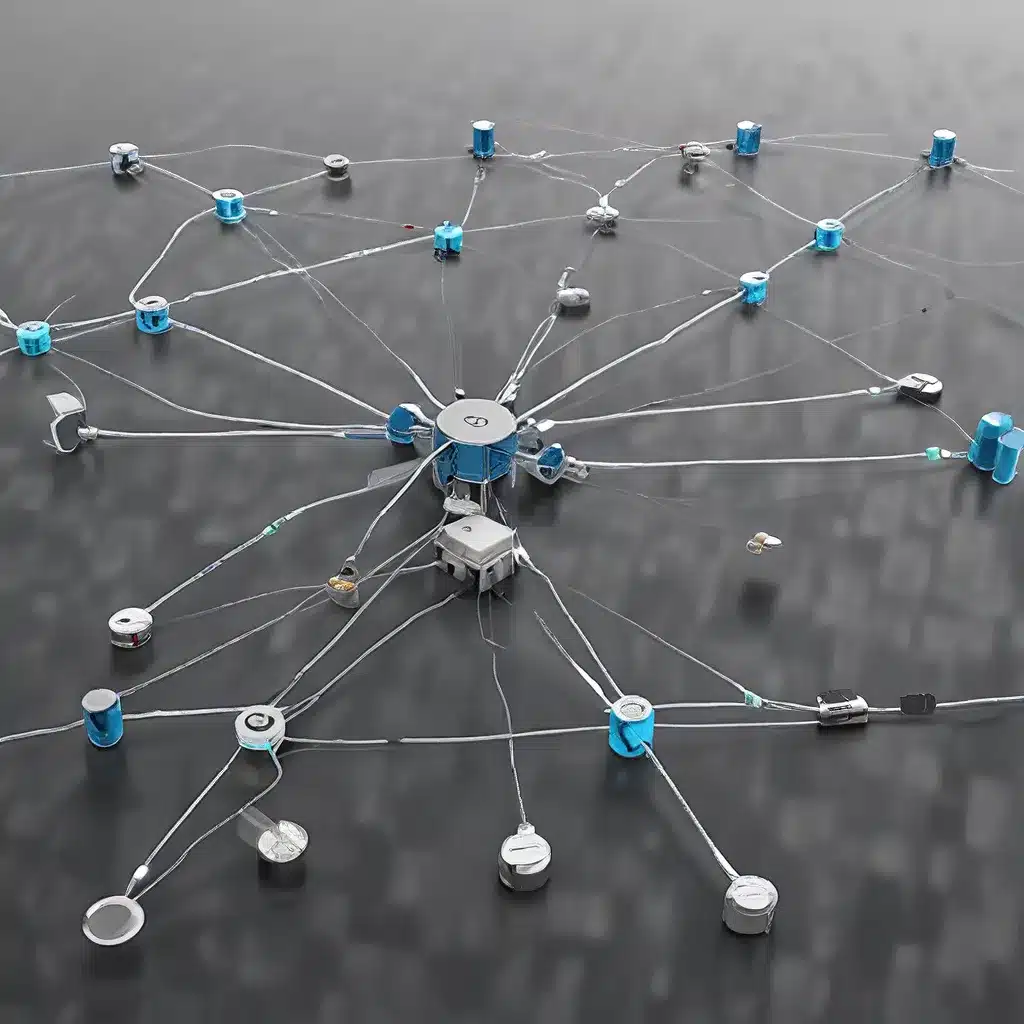
In the rapidly evolving landscape of sensor networks and the Internet of Things (IoT), the need for resilient and self-healing systems has become increasingly paramount. As these technologies become more ubiquitous, the ability to ensure accurate and reliable data collection is crucial for a wide range of applications, from environmental monitoring to industrial automation. This article delves into the intricacies of distributed sensor calibration algorithms, exploring their vital role in maintaining the integrity and resilience of wireless sensor networks.
The Importance of Sensor Calibration in Wireless Networks
Sensor networks are the backbone of IoT, facilitating the collection and transmission of vast amounts of data from the physical world to digital platforms. However, this data is only as reliable as the sensors themselves. Inaccuracies or drifts in sensor readings can lead to skewed data, compromising the effectiveness of the entire system. This is where sensor calibration plays a pivotal role.
Sensor calibration is the process of adjusting sensor readings to match a known, reliable reference standard. This ensures that the data collected by the sensors accurately represents the physical phenomena being measured. In the context of wireless sensor networks, where nodes are often distributed across large geographical areas, a centralized calibration approach can be both inefficient and impractical.
Distributed Sensor Calibration Algorithms
To address the challenges of sensor network scalability and resilience, researchers have developed distributed sensor calibration algorithms. These algorithms enable self-calibration of sensor nodes, allowing the network to adapt and maintain its accuracy without the need for manual intervention or a centralized control system.
One such algorithm, known as the Recursive Least Squares (RLS) algorithm, utilizes a decentralized approach to sensor calibration. Each sensor node in the network independently updates its calibration parameters based on its own measurements and those of its neighboring nodes. This distributed nature allows the network to self-heal in the face of sensor failures or environmental changes, ensuring the continued reliability of the collected data.
Another innovative approach is the Gossip-based Calibration (GBC) algorithm, which leverages the gossip communication protocol to facilitate the exchange of calibration information between sensor nodes. In this algorithm, each node initiates periodic exchanges with randomly selected neighbors, gradually converging towards a consistent calibration state across the entire network.
The Benefits of Resilient and Self-Healing Wireless Sensor Networks
The deployment of distributed sensor calibration algorithms in wireless sensor networks offers a range of benefits that enhance the overall resilience and self-healing capabilities of these systems.
-
Adaptability to Environmental Changes: Sensor networks operating in dynamic environments, such as industrial settings or outdoor locations, are subject to various environmental factors that can affect sensor performance over time. Distributed calibration algorithms enable the network to automatically adjust to these changes, ensuring the continued accuracy of data collection.
-
Fault Tolerance: In large-scale sensor networks, the failure of individual nodes is a common occurrence. Distributed calibration algorithms allow the remaining functional nodes to self-heal the network, maintaining data integrity even in the face of node failures or sensor malfunctions.
-
Enhanced Scalability: As the number of sensor nodes in a network increases, a centralized calibration approach becomes increasingly challenging to manage. Distributed algorithms, on the other hand, can scale efficiently, accommodating the addition or removal of nodes without compromising the overall system performance.
-
Reduced Maintenance Costs: Manual sensor calibration is a labor-intensive and time-consuming task, especially in widely distributed sensor networks. Distributed algorithms eliminate the need for frequent on-site interventions, lowering operational costs and improving the overall cost-effectiveness of the system.
-
Improved Data Reliability: By maintaining consistent sensor calibration across the network, distributed algorithms ensure that the collected data is accurate, reliable, and representative of the physical phenomena being monitored. This is crucial for applications where data integrity is of paramount importance, such as in environmental monitoring, industrial process control, or smart city infrastructure.
Practical Applications of Distributed Sensor Calibration
The applications of distributed sensor calibration algorithms span a wide range of industries and domains, showcasing the versatility and importance of these technologies in the IoT ecosystem.
-
Environmental Monitoring: Sensor networks deployed for environmental monitoring, such as air quality, water quality, or weather observation, can leverage distributed calibration algorithms to maintain the accuracy of their measurements over extended periods, even in the face of environmental changes or sensor degradation.
-
Industrial Automation: In industrial settings, sensor networks are essential for process monitoring, quality control, and predictive maintenance. Distributed calibration algorithms ensure that sensor data remains reliable, enabling more informed decision-making and optimization of industrial processes.
-
Smart Cities: The deployment of sensor networks in smart cities, for applications such as traffic management, infrastructure monitoring, or public safety, requires robust and resilient systems. Distributed calibration algorithms contribute to the overall stability and reliability of these networks, supporting the development of more efficient and responsive urban environments.
-
Healthcare and Biomedical Applications: In the healthcare and biomedical domains, sensor networks are used for patient monitoring, drug delivery, and various other medical applications. Distributed calibration algorithms help maintain the accuracy of sensor readings, ensuring the safety and efficacy of these critical systems.
-
Agricultural and Precision Farming: Sensor networks in agricultural settings, such as precision farming or smart greenhouses, benefit from distributed calibration algorithms to maintain the precision of their monitoring and control systems, optimizing resource management and crop yields.
As the IoT landscape continues to evolve, the importance of resilient and self-healing sensor networks will only increase. Distributed sensor calibration algorithms, exemplified by approaches like the Recursive Least Squares (RLS) and Gossip-based Calibration (GBC) algorithms, play a crucial role in ensuring the sustained performance and reliability of these systems, unlocking new possibilities for a wide range of industries and applications.
To learn more about the latest advancements in sensor network technologies and their practical applications, we invite you to explore the resources available on our website, https://sensor-networks.org/. Our team of experts is dedicated to providing the most up-to-date and insightful information to help you stay ahead in the rapidly evolving world of sensor networks and IoT.